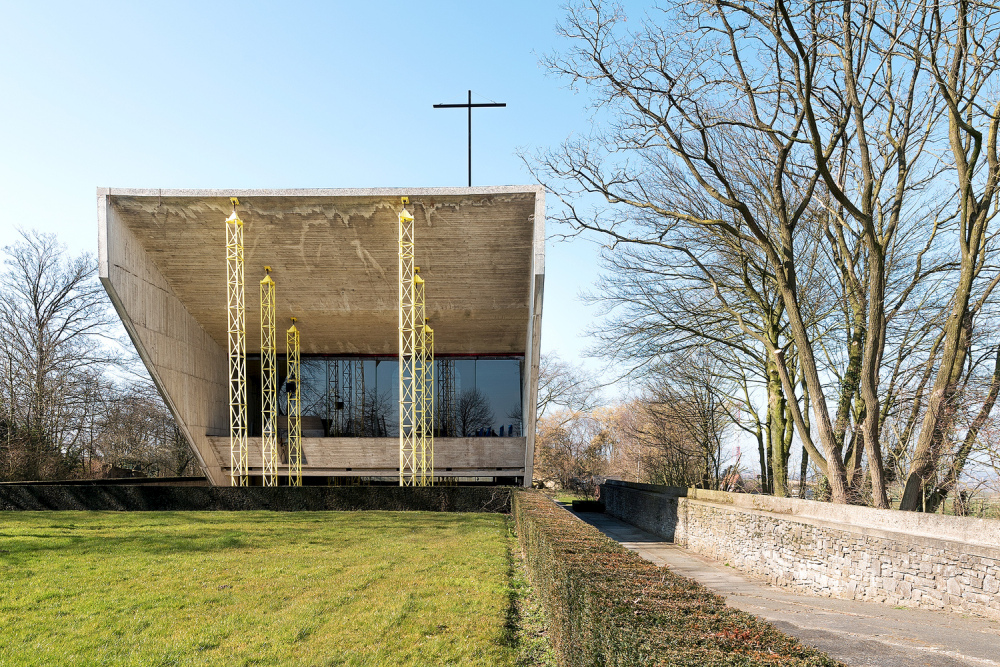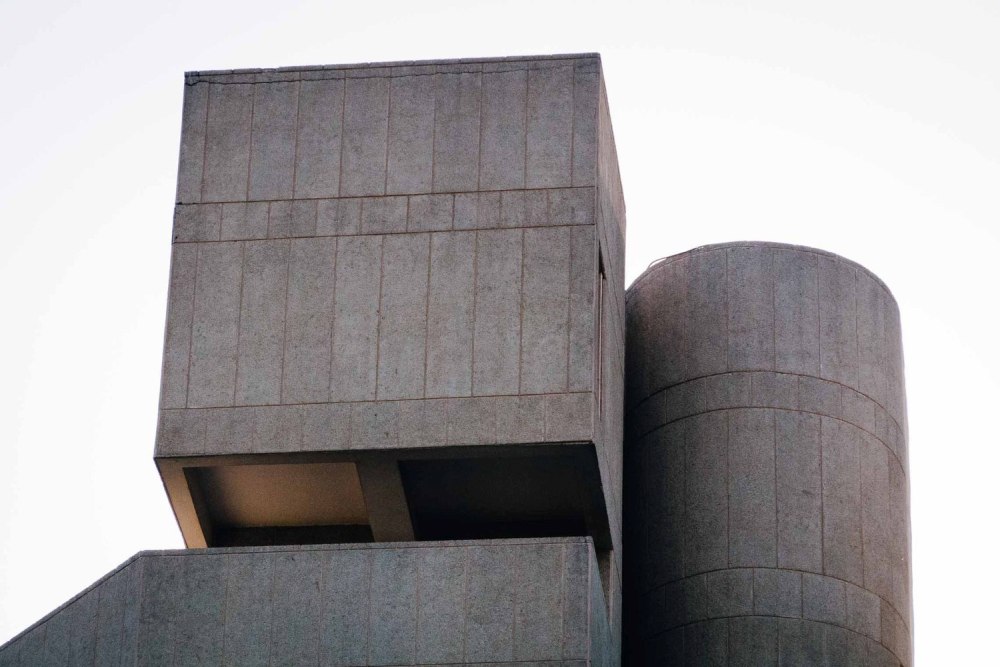Brutalist architecture is everywhere. There’s a chance you’ve seen and been inside a brutalist building. However, you may not have known its design classification. Today, brutalism remains the last significant architectural movement.

“In 1970, 20 percent of all buildings were designed by architects. Today only 10 percent and those rarely adventurous or socially minded. Architects are reduced to designers and stylists of the Property Developers,” said renowned architect David Russell.
Le Corbusier was the father of the brutalist movement, which emerged in the 50s. The style was embraced in western countries, and by the 70s, brutalist buildings could be found in most cities and on college campuses.
What Is Brutalist Architecture?

The architectural style emerged in the 50s. As a design movement, it was centered on a harsh aesthetic featuring rough, bleak surfaces, and non-traditional geometric shapes. Government buildings like Boston’s City Hall, Genex Tower, or the Pirelli Tire Building, are made of concrete and have odd-shaped windows.
The architectural style is often used as a backdrop in dystopian cinema due to the utilitarian nature of the buildings. However, regardless of how you feel, it’s impossible to ride the fence. You either love the architectural style or you don’t.
As renewed interest gains momentum, many see the style as a form of maximalist architecture due to the large framed buildings.
Key Features Of Brutalist Architecture
Let’s look at a few characteristics that define the brutalist style.
Exposed Concrete
Concrete is the most important component of brutalism. Other materials can be used, such as rebar, but most of the structure will consist of reinforced concrete or CMU.
When the movement first emerged, concrete was rare. The material was considered high-end and modern.
Grim Tower Blocks
Brutalism is all about geometric shapes and block designs. Blocks are dense hand heavy, rather than soft. Whereas other designs would be similar to standard Legos, brutalist designs are similar to Mega Bloks.
Most brutalist designs feature squares and rectangles, like public housing or institutional buildings.
New Brutalism

Brutalism has its artistic merits. Unlike the earliest examples, today’s brutalist buildings aren’t all about reinforced concrete, rebar, or rough surfaces.
Unified Whole
Overhangs
Overhangs may not be a constant, but they’re not uncommon. Unlike a pyramid, where the bottom is bigger than the top, brutalism architecture flips this design notion. For example, brutalist buildings start small and end large.
The bottom half of a brutalist building will be smaller than its upper half. To give you a better idea of the movement’s visual qualities, imagine a building shaped like a geometric mushroom with concrete blocks.
Monochromatic
Brutalist buildings do not rely on color palettes or utilize color schemes. The buildings are monochromatic, which makes them look cool and smart. Their lack of color makes then easier to film, which is why they’re used as backdrops in movies. The architectural style is also synonymous with dystopian landscapes.
Small Windows
Brutalism eschews large windows, preferring. One reason why is because large windows are a distraction. With small windows, your attention is focused on the structure.
You can add large windows to a brutalist building but it isn’t ideal. It can take away from the bulkiness and dreariness of the structure. If you do, it’s a good idea to add blackout curtains or something to weigh it down.
Brutalist Architecture On US College Campuses
Every college campus in America has at least one brutalist building. Brutalism architecture was embraced by US college campuses upon its arrival. The buildings were cheaper and easier to build. One unconfirmed theory behind the style’s widespread emergence is how the buildings suppressed student protests. Also, brick pathways are slippery when wet.
Harvard
The man responsible for the brutalist movement was responsible for one US construction project. The Carpenter Center for the Visual Arts at Harvard University was built in the early 60s by Le Corbusier.
Le Corbusier intended the multi-story ramp to serve has a metaphor for open dialogue between art forms.
Yale
Yale University’s Rudolph Hall was another early addition of the brutalist architecture movement on US soil. Designed by American architect Paul Rudolph, the nine-story building has 37 level changes. And two of its floors are underground.
Rudolph’s design challenged contemporary notions of how heavy and light space are defined. A key tenant of brutalism is the defiance of gravity.
University of Washington
Located in Seattle, Washington, the University of Washington’s Red Square is a three-way monument to the brutalist school from the 70s.
The first building in the brutalist series was Kane Hall. Designed by Walker & McGough in 1971, the exterior is pure brutalism while the interior is a different style. Narrow columns and recessed windows are trademark characteristics of brutalism architecture.
The second building is Odegaard Undergraduate Library. Designed by Wallace, McKinley & Associates, the library opened in 1972. And just like Kane Hall, the library features red brick and recessed windows.
The third building is Meany Hall for the Performing Arts. Designed by Kirk, Wallace, McKinley & Associates, the performance hall opened in 1974. The building’s looming presence by its lack of windows. Interior acoustics cleaner in buildings without windows.
Brutalist Recreational Architecture
Brutalism influence extends beyond government buildings and college campuses. When skateboarding mushroomed in the 70s and 80s, along with it came the advent of skateboard park. However, before that, brutalist buildings served as makeshift skateboard parks.
The fiber of skateboard park design is connected to the brutalist aesthetic. With concrete surfaces and odd shapes, the skatepark became a clever tribute to the brutalist movement.
Let’s take a look at a few skateboard parks that illustrate the architectural style.
Southbank Centre
Located in London, England, the Southbank Centre is known worldwide as a skateboarding hotspot. Opened in 1973, the building served as the foundation for the city’s skateboard culture. Without the building, skateboarding wouldn’t have developed the way it did.
SLO Skatepark
Located in San Luis Obispo, California, the SLO skatepark is a 17,000-square-foot tribute to brutalist designs.
Brutalist Architecture Worldwide
Let’s take a look at a few important works of brutalist architecture and how the style has impacted the world.
New York City
Although primarily a mid-century modern, brutalism is still alive today. The popularity of this style seemed to disappear during the 80s and was nearly non-existent in the 1990s and 2000s when it came to new constructions.
The name itself is enough to deter a lot of people. Brutal is not the best name for something that is to be seen as art. But the name comes from the French term for raw concrete rather than a brutal nature.
Colombia

The small urban space uses every inch of its outside space. Located in Medellin, Colombia, the neighborhood is known as Comuna 13.
Belgium

One of Belgium’s greatest architects, Constatin Brodzki, was a leading figure in the brutalist movement. He began his career in the 40s and rose to prominence in Europe. Brodzki later became a respected figure in American architecture.
Uzbekistan

Many Soviet and Asian architecture designs feature brutalist influences. Brutalist buildings erected in Uzbekistan during the 70s remain an integral part of the nation’s landscape. The color splashes featured on the Circus in Tashkent makes it a brutalist treasure.
North Caucasus

North Caucasus is known for its contributions to the art world. Across the region, statues stand on the side of cliffs. However, Hotel Amanauz is in a different league.
India

Designed by Indian architect Achyut Kanvinde, the National Dairy Development Board (NDDB) opened in 1985. When most people think of India, brutalist architecture doesn’t come to mind. However, the architectural movement is a natural fit with the country’s geographic landscape.
Israel

Beersheba Divinity in Israel features bare concrete. It’s a place where crowds gather daily at the Statue of Israel, built-in 1948.
Frequently Asked Questions (FAQ)FAQ
Which Film Features Examples Of Brutalist Architecture?
Arguably, the most popular film that uses brutalist architecture as a backdrop is the 1972 Stanley Kubrick film, “A Clockwork Orange.” The film’s exteriors feature Thamesmead Estate in Bexley, England.
Thamesmead Estate was one of the city’s specific functional zones. The architectural style served as a visual metaphor for a chaotic and crumbling world.
Why Is Brutalism Called Brutalism?
In 1950, Swedish architect Hans Asplund coined the term “New Brutalism.” However, it wasn’t until the mid-50s that the term became commonly known thanks to British author and architectural critic, Peter Reyner Banham.
Banham referred to the architectural style simply as “brutalism.” The term’s origins can be traced to French architect, Le Corbusier, who favored working with “béton brut,” otherwise in English known as “raw concrete.”
Is Brutalism Architecture Dead?
Brutalism died in the mid 70s. According to some, it’s making a comeback. In major metropolitan cities, buildings that were once considered undesirable are now more popular than ever. It has also been reported that South Korea, for example, is experiencing a “Neo Brutalist” movement.
Which US city Has The Most Brutalist Architecture?
Washington D.C. is home to more brutalist buildings than any city in America. The style is featured prominently because it is home to the federal government. For example, the headquarters for the Federal Bureau of Investigation (F.B.I.).
What Influenced Brutalism Architecture?
Brutalist architecture is a post World War II movement. The core tenants of the style are functionalism and monumental simplicity. Due to the high demand for urban reconstruction during the mid-way point of the 20th century, brutalism was born.
Brutalist Architecture Conclusion
When brutalist architecture emerged, its impact on structure design was felt worldwide. The movement has an indelible impact on how buildings function.
The architecture movement flourished over half a century ago, but a comeback is underway. Brutalist buildings are either being preserved, or new ones are being constructed.
When the architectural style was introduced to the public, it wasn’t embraced. Given the efforts and interests of the public, today, the building style has found a new generation of admirers.
A brutalist revival is underway in regions worldwide. South Korea, Singapore, and Hong Kong are experiencing renewed vigor for architecture. The revival spirit has also inspired new growth, allowing architects to push brutalism in new directions.
Those who do not like brutalist architecture have discovered they don’t have a choice but to live with it. One built-in feature of a brutalist building is how it’s not easy to demolish or cheap to remodel. Brutalist buildings are also high maintenance compared to their traditional building counterparts.
The post Brutalist Architecture: A Global Revival Is Underway appeared first on Homedit.







0 Commentaires